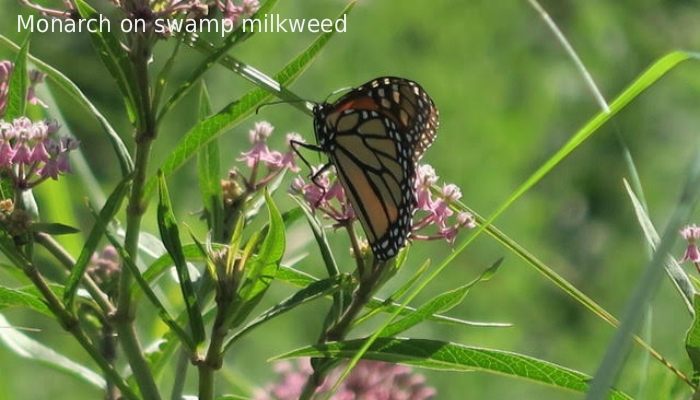Recording Drought Response on Prairie Blooming

Here’s another journal entry from Sibylla Brown – detailing her Timberhill Oak Savannah butterfly observations.
During the last two weeks of July it has been interesting to observe the native plants’ response to our persistent drought conditions. Bloom on the hillside prairie remnants is limited to a few species such as Rosinweed, Hairy Mountain Mint and Elm-leaved Goldenrod. Everything else has dried up. Butterfly activity on the Rosinweed and Mountain Mint is scarce. To my surprise it was on an old crop field south of Brush Creek below the East Savanna that the butterflies were most abundant.
When we purchased the land that became Timberhill, this field had been used to grow corn and soybeans. We took it out of production in 1994 and implemented annual prescribed fire there in 1995. We seeded it with warm season grass collected in one of our prairie remnants. We seeded no forbs yet various native wildflower species became established after each burn. Common Milkweed was the first to appear. It dominated the field for several years. Since then Wild Bergamot, Culver’s Root, Ironweed, Hairy and Slender Mountain Mint, Cup Plant, Round-headed Bush Clover, Evening Primrose, Goldenrod, and Swamp Milkweed have become well established and the Common Milkweed has become less dominant.
Wild Bergamot, a favorite butterfly nectar source, stopped blooming in the prairie remnants over one week ago. But in this field there is still abundant bloom. Silver-spotted Skippers chase each other and anything that comes near them from one pink inflorescence to another. This is also the preferred nectar source for Southern and Northern Cloudywings, Delaware Skippers, Northern Broken Dash Skippers and Snowberry Clearwing Moths. The Swallowtails are only occasional visitors as most had moved on to Cup Plant, Ironweed, and Swamp Milkweed. Given all the Common Milkweed I was not surprised to see as many as ten Monarchs at the same time in the Swamp Milkweed patch in this field.
Other than the Sphinx Moths, Imperial, and Tiger Moths have been most attracted to our lights. I am puzzled by the lack of Underwing Moth diversity this year. So far I’ve only seen a couple species. In a normal year eleven species would have come to our black lights or baited trees by now. It’s been a strange year.
It’s still too dry for terrestrial mushroom fruiting. Mid-July through August into September is usually the best time of year for them. We need a lot of rain for that to happen.
Originally published in Southern Iowa Oak Savannah Alliance blog by Sibylla Brown.


